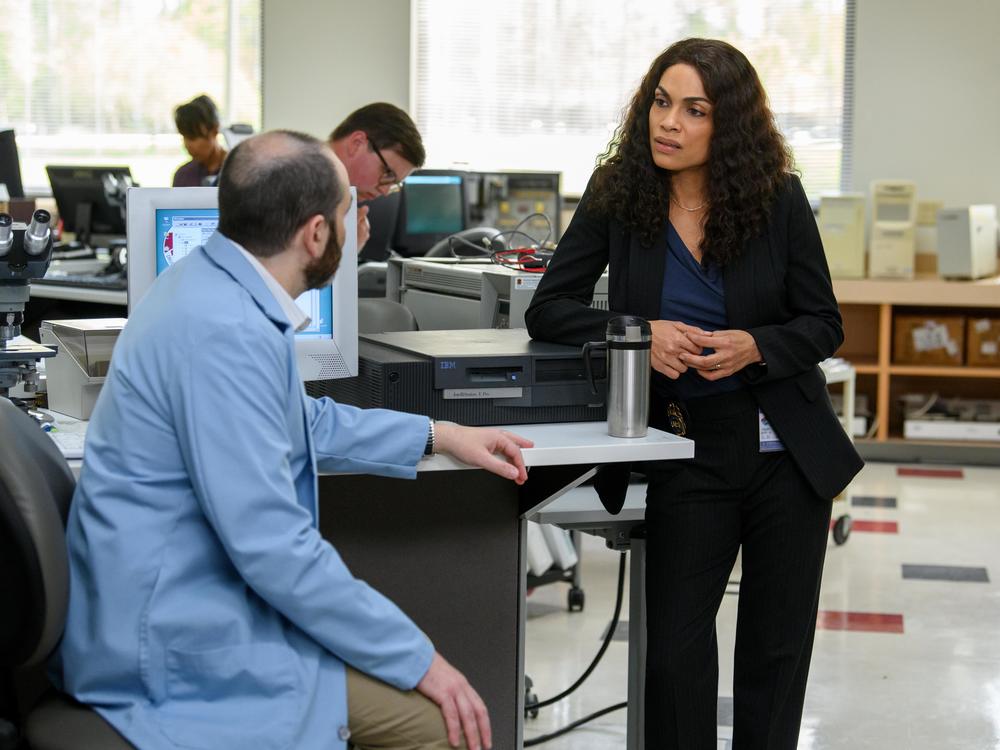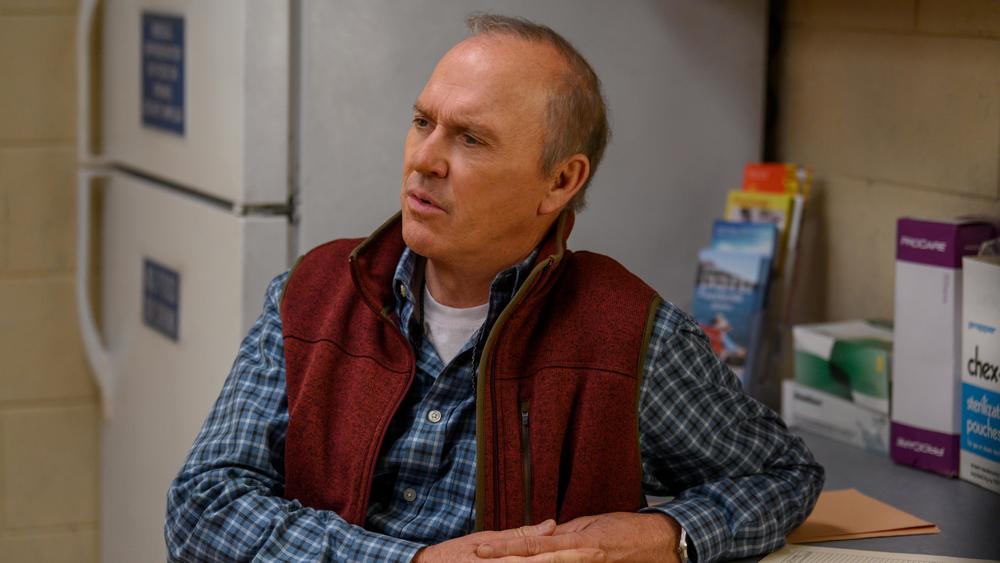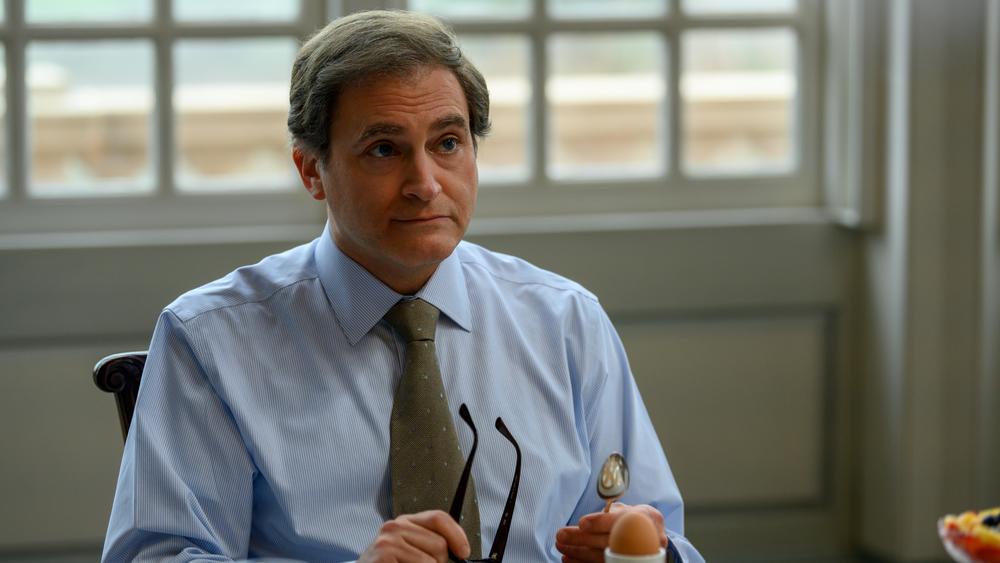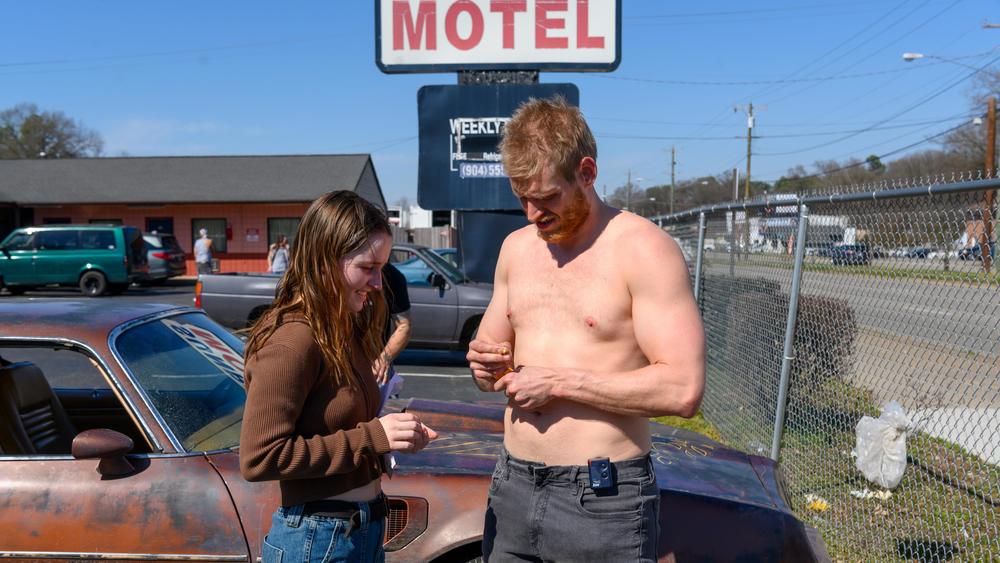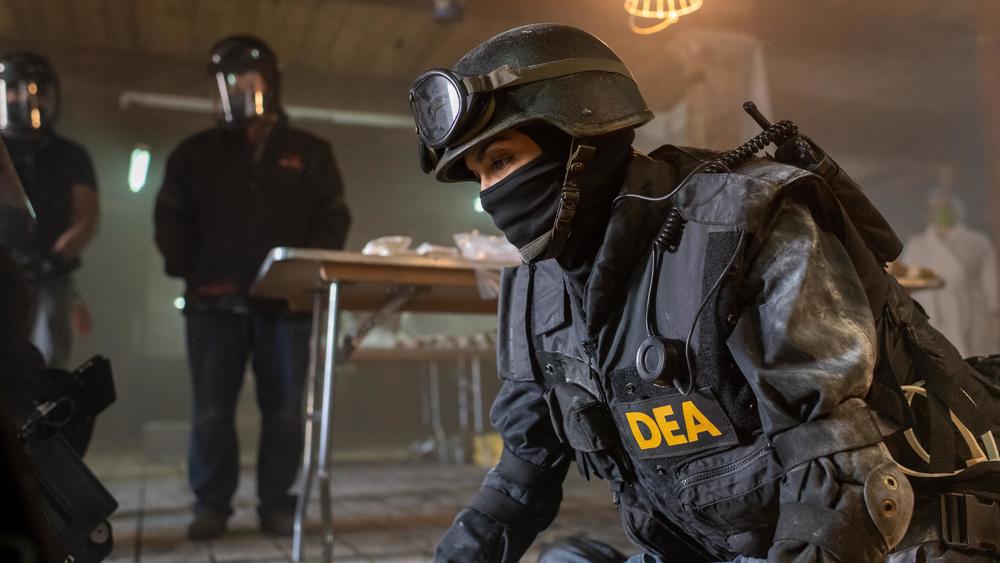Section Branding
Header Content
Is 'Dopesick' a true story? Experts and the show's creators sort fact from fiction
Primary Content
Editor's note: This story contains quotes and information originally discussed during a Twitter Spaces event hosted by NPR TV critic Eric Deggans and featuring NPR addiction correspondent Brian Mann, Dopesick book author Beth Macy, Dopesick series creator/showrunner Danny Strong and more. Follow us on Twitter, and read more of NPR's addiction coverage here. This story contains spoilers about events depicted in Hulu's limited series.
Hulu's Dopesick depicts the start of the opioid addiction crisis in the U.S. and some of the people it has affected. NPR TV critic Eric Deggans and NPR addiction correspondent Brian Mann spoke with Dopesick author Beth Macy and Dopesick series creator/showrunner Danny Strong to discuss the show and just how real it is.
Is Dopesick a true story?
Mostly. Hulu's limited series is based in part on material from the nonfiction book Dopesick: Dealers, Doctors and the Drug Company that Addicted America by journalist Beth Macy, who has written extensively about the opioid crisis in Appalachia.
As Macy was considering offers around Hollywood, executive producer Danny Strong had already set up his own opioid addiction project at 20th Television. They had a fateful meeting in Chicago, and decided to work together to add authenticity to Strong's scripts.
While developing the show, they did extensive research to give the series a feeling of authenticity. They brought in people from small towns and with opioid abuse disorder. They consulted a doctor who had been addicted to OxyContin who revealed the horrors he suffered.
"Because we were documenting the crimes of Purdue Pharma, the show needed to feel as real as possible," Macy said. Anything that didn't feel real wouldn't fly.
But Strong says several characters in Dopesick are fictionalized — their character arcs assembled from the stories of a few different people.
When it comes to members of the Sackler family who own and control OxyContin manufacturer Purdue Pharma, the series takes a strong position. They're often shown as callous villains with little regard for patients who become addicted or communities devastated by the disease.
Hulu's Dopesick also portrays a law enforcement and regulatory system struggling to hold the Sacklers and Purdue Pharma accountable, overwhelmed by their financial, legal and lobbying resources.
The Sacklers, however, maintain they did nothing wrong. Brian Mann, NPR's addiction correspondent, said the TV show streamlines the real-life story in ways that can make for more effective TV drama.
"I think that a storyline like Dopesick in the somewhat fictionalized narrative can bring a kind of moral throughline that often feels pretty satisfying," added Mann.
"I've been in West Virginia, Ohio, communities that have been devastated by this public health crisis and it seems unlikely that corporations or their leaders involved in the opioid business will be held accountable," Mann added.
Is Michael Keaton's character based on a real doctor?
Michael Keaton plays Dr. Samuel Finnix, a dedicated doctor in a small Virginia mining town who was persuaded by a Purdue Pharma salesman to prescribe OxyContin for his patients. As they grew addicted, Finnix developed his own dependence on the drug, beginning an odyssey through addiction and recovery that mirrored his patients' journey.
Keaton's character doesn't exist in the real world, but many doctors like him helped shape Finnix's story.
"If I made these characters composite characters, I [could] get way more of these anecdotes into these arcs with fewer characters and get more truthful stories into the show," Strong said. "By fictionalizing, I wouldn't be stuck to the truth of one person's life. I could use as many anecdotes as I wanted. I could achieve a more universal truth; a higher truth."
What is Richard Sackler really like?
In his review of Dopesick, NPR TV critic Eric Deggans wrote that Michael Stuhlbarg, who plays Purdue Pharma's former President Richard Sackler, has "the creepy intensity of a Bond villain." Stuhlbarg plays Sackler as a ruthless leader with few social skills intent on boosting OxyContin sales regardless of the collateral damage. Is he really like that?
Macy and Strong dug through the books written about the Sacklers and interviewed former employees to understand what Richard Sackler was like.
But even Strong admits he's a bit of a mystery.
"It's challenging to figure out," Strong said. "What is truly making this person tick?"
Mann said as a journalist, he wasn't in a place where he knows what's in Sackler's heart. He noted that, even though other executives and the company itself have pleaded guilty to crimes, the Sacklers individually haven't been charged with breaking any laws.
"What I can say is that Richard Sackler and Purdue Pharma were very, very effective at turning this company into a turbocharged marketer," Mann said.
Strong said he was surprised by what happened after the company and some executives pleaded guilty.
"Do they offer any solutions to what has occurred? No. They actually sell harder and push harder," he added. "And there are anecdotes of Richard Sackler literally calling sales reps and saying, 'You have to push even harder. You have to sell, sell, sell.' "
Does it portray Appalachia accurately?
Macy, who wrote the book Dopesick, is a longtime newspaper writer in Roanoke, Va. She's spent many years covering the stories and people of Appalachia; accurately depicting these small towns, the people and the culture was a priority for her in working on the TV series.
"Appalachia has just been dumped on for over a century to be honest, and I just wanted to make sure that we treated as accurately and with humanity," Macy said. "Appalachians are real people, and they've suffered more than the average Americans."
Strong followed Macy's suggestion to hire Robert Gipe, a graphic novelist who lives in eastern Kentucky, as a consultant. She says Gipe vetted every single detail.
"We wanted the viewer to come away with the story of what really happened out there," Macy said. "So many people haven't been to these small communities that have just been decimated."
"The portrayal of Appalachia was a huge priority for me," Strong said. "I know how much backlash there has been over [other] projects...I came into this knowing this is very sensitive and that I'm going to need to get this right."
Where race fits into the story
NPR's Deggans noted that, because Dopesick focuses on rural, predominantly white communities, the show doesn't talk about race very much. Which means the series' sympathetic portrayals of those struggling with addiction mostly feature white people.
"Folks who have been involved with these issues have always worried about certain types of people who struggle with substance use disorder getting more sympathy from the general public," Deggans said, referencing a dynamic where non-white people suffering from addiction face more punitive attitudes from the general public.
Carlton Hall — a consultant and expert on addiction prevention — said it's an ongoing issue.
"The reality is that there have been massive deaths associated with opioids and heroin for a very, very, very, long time in Black and brown communities around the country," Hall said. "Yet, it was dealt with from a mostly a criminal justice and punitive standpoint rather than the public health approach, which is what we have learned to do now."
NPR's reporting has found the public response in Black urban communities struggling with the opioid epidemic has often differed from the response in small white towns like the ones portrayed in Dopesick.
Black Americans with addiction face higher rates of incarceration and have often been denied access to treatment and health care. During the pandemic, overdose deaths have surged among people of color.
"It was not spoken of, and therefore overlooked, so there has been a bit of a racial component to this," Hall said.
"While we're talking about opioids, the country has more than an opioid problem," Hall added. "It has an addiction problem, and that is touching every race, every community, and those communities have been treated differently and are now we're beginning to look at that and try to apply a different approaches, which I have some hope for."
Arielle Retting and Emily Alfin Johnson adapted this story for the web.
Copyright 2021 NPR. To see more, visit https://www.npr.org.
